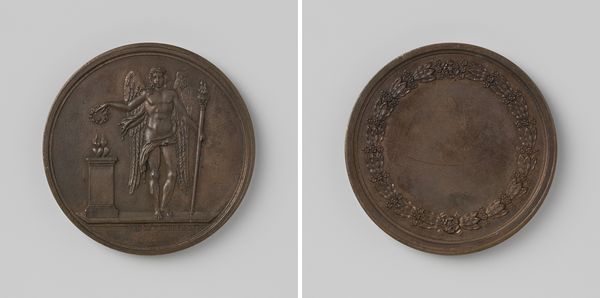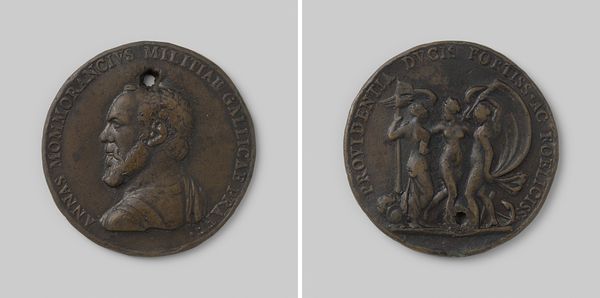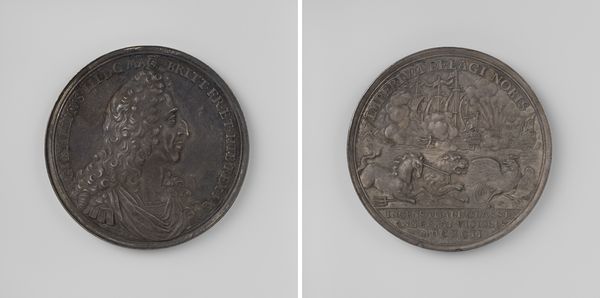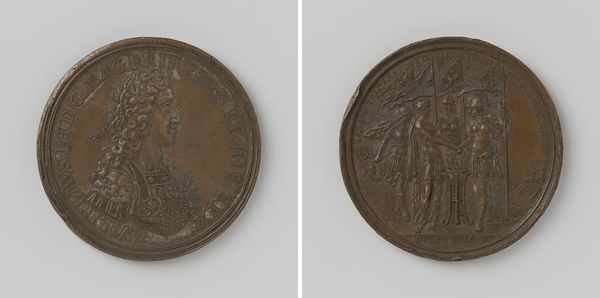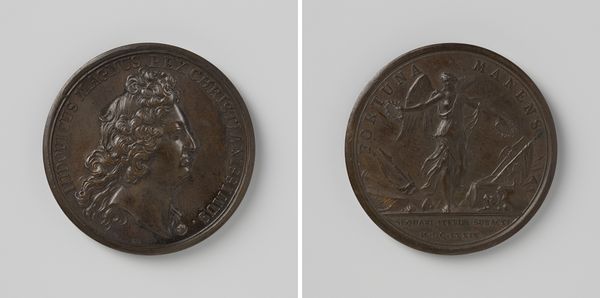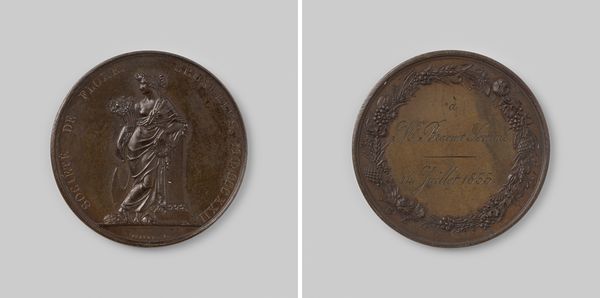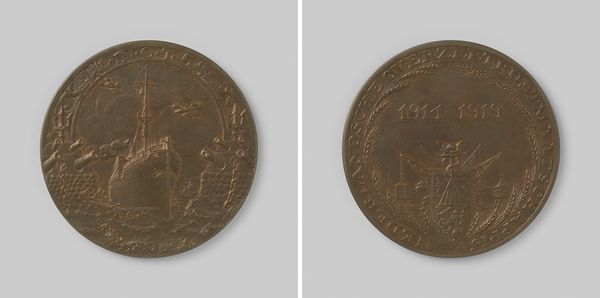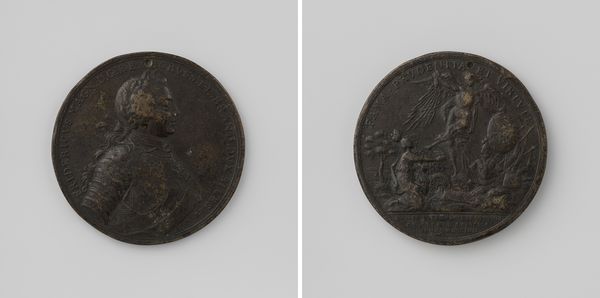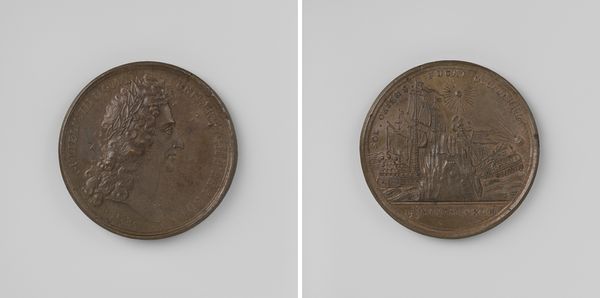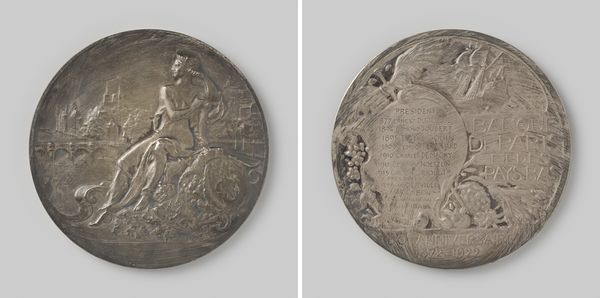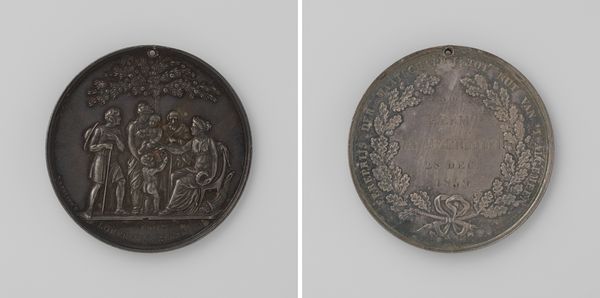
relief, bronze, sculpture
#
portrait
#
medieval
#
sculpture
#
relief
#
bronze
#
sculptural image
#
figuration
#
sculpture
#
history-painting
Dimensions: diameter 6.4 cm, weight 32.12 gr
Copyright: Rijks Museum: Open Domain
Editor: Here we have a bronze relief titled "Huwelijk van prins Willem III en Maria, prinses van York," created anonymously in 1677. It's currently held in the Rijksmuseum. It appears to depict a wedding, with two figures flanking what looks like a crowned emblem. It's quite dense and detailed. How would you interpret this work from a formal perspective? Curator: Well, focusing purely on the intrinsic elements, consider the composition. The bilateral symmetry is immediately apparent, divided along a vertical axis with near mirror-image placement of figures and foliage. Observe how the sculptor employed varying depths to create spatial recession within the limited field. What semiotic relationships do you observe within the visual elements? Editor: I notice the laurel wreath border, typically symbolizing victory or honor. The figures themselves seem posed rather stiffly, almost as symbolic representations rather than naturalistic depictions. The banner held aloft, I assume, also bears some symbolic weight? Curator: Precisely. The rigidity reinforces a sense of formality and perhaps permanence, qualities one might expect in a commemorative object. The banner serves as a textual element integrated into the visual field, requiring decoding. Note the interplay of textures – the smooth skin of the figures against the intricate foliage and the highly wrought central emblem. What effect does this contrast achieve? Editor: It seems to draw my eye toward the center, highlighting that crowned emblem and emphasizing its importance. The varied textures keep it from being monotonous, I think. It adds depth even in such shallow relief. Curator: Indeed. The manipulation of surface texture and spatial depth serves to create visual interest and hierarchy. Ultimately, formal analysis reveals the artist's intention to create a symbolic representation of power and union through careful arrangement of visual elements and deployment of classical motifs. Editor: This gives me a new appreciation for the thought process in understanding art's components and context. Curator: As it should, by analyzing only line, form, and arrangement we remove the distracting clutter from art viewing.
Comments
No comments
Be the first to comment and join the conversation on the ultimate creative platform.
